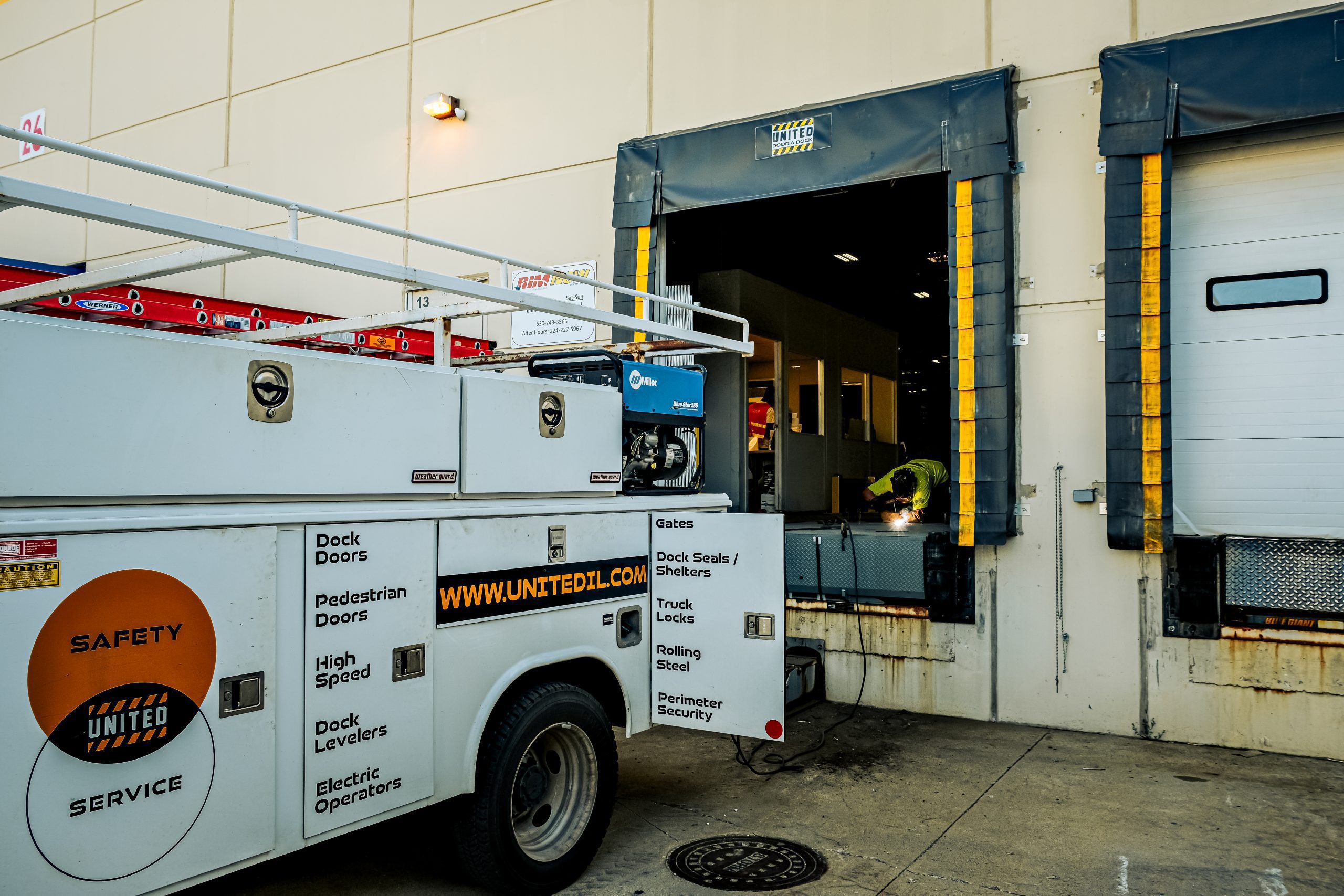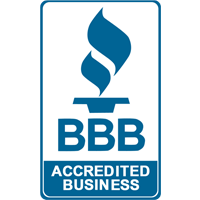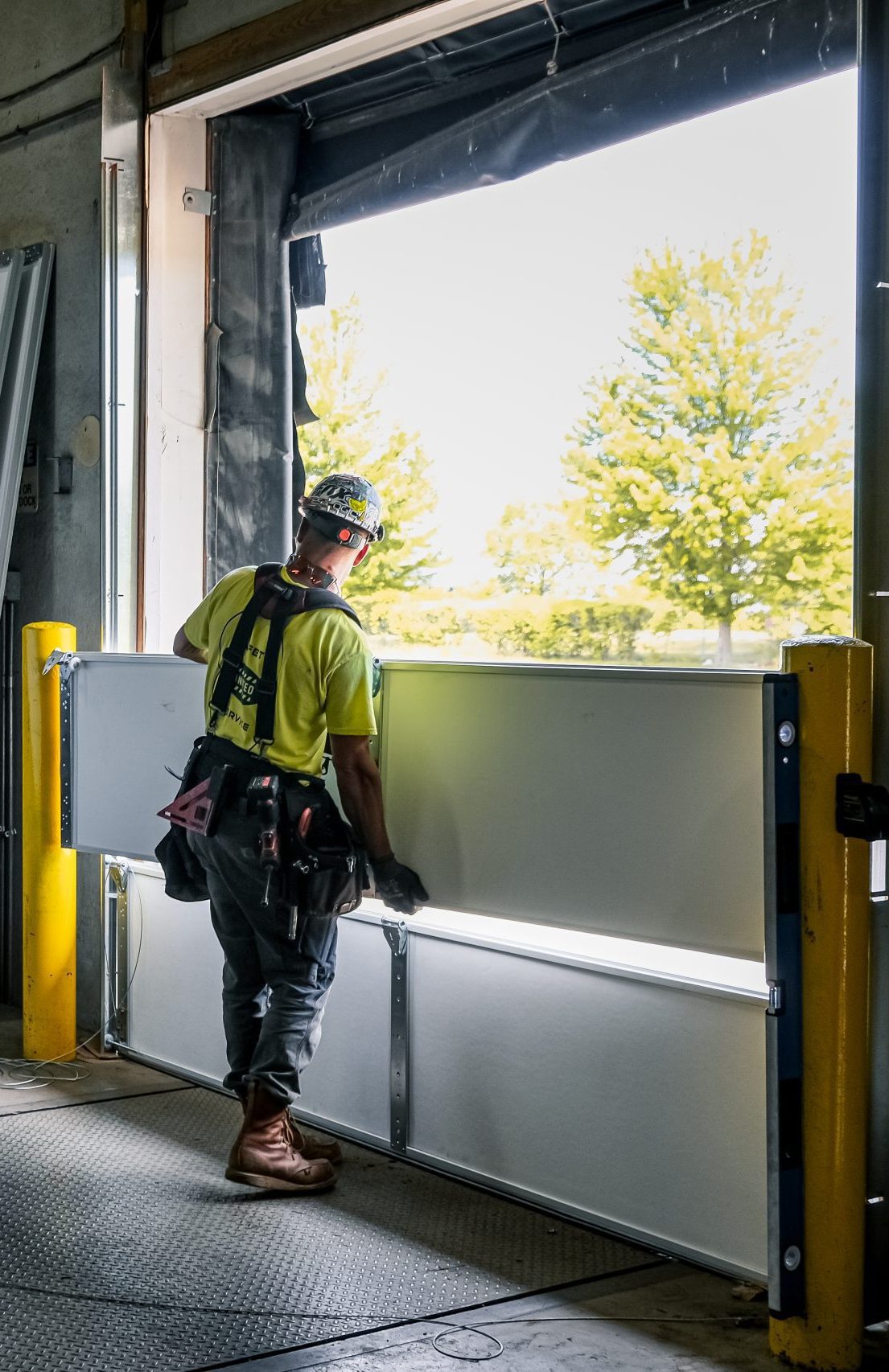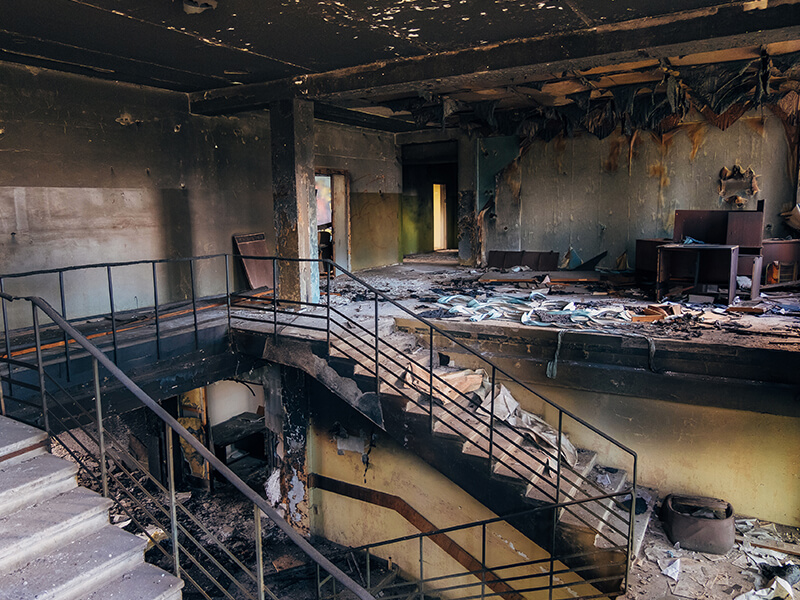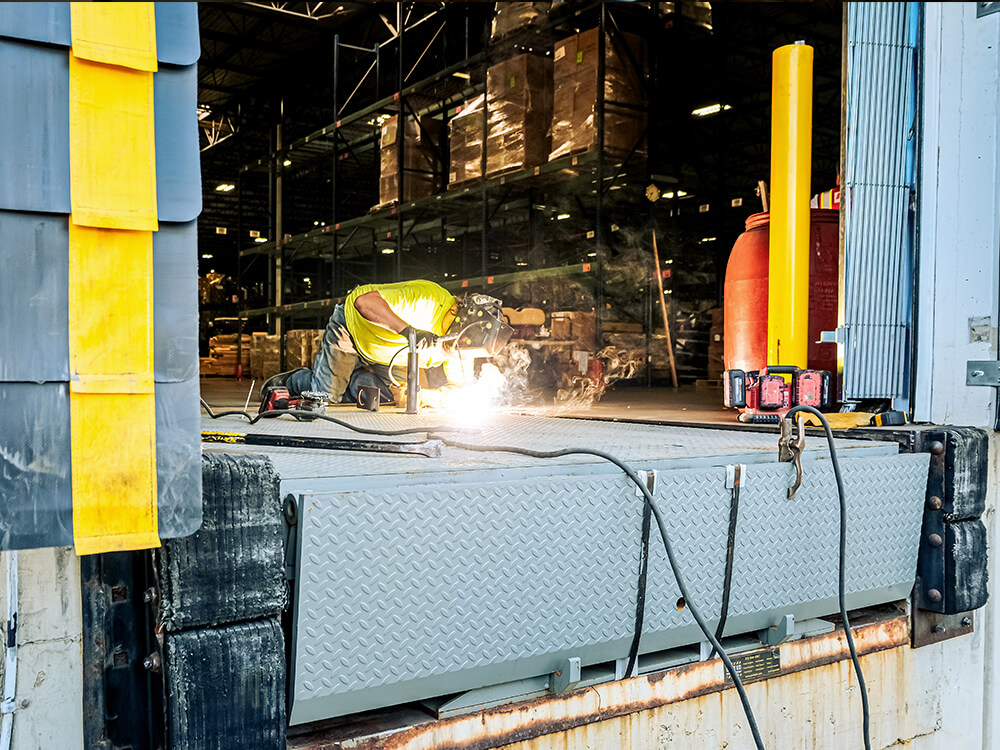A well-maintained loading dock and door system is crucial for the smooth operation of any warehouse or distribution center. Regular preventative maintenance appointments with a professional service provider, such as United Door and Dock, will ensure your equipment remains in working condition. However, you can take steps between these appointments to keep your loading dock and doors running smoothly. In this blog post, we’ll explore some best practices for maintaining your dock and door system so you can avoid costly downtime and keep your operation running as it should.
1. Train Your Team on Proper Equipment Use and Care
The first step in maintaining your loading dock and doors between preventative maintenance appointments is ensuring that your team understands how to properly use and care for the equipment. Ensure your team follows the manufacturer’s equipment operating guidelines and safety protocols. When your team is knowledgeable about the proper use and care of your dock and door equipment, they’ll be more likely to spot potential issues before they escalate into major problems.
2. Implement a Daily Inspection Routine
Establishing a daily inspection routine is one of the most effective ways to keep your loading dock and doors running smoothly between preventative maintenance appointments. This routine should involve having a designated team member check the equipment for any signs of wear and tear, damage, or other issues at the beginning and end of each shift. By catching potential problems early, you can address them before they lead to equipment failure or costly downtime.
Some key areas to inspect during daily checks include:
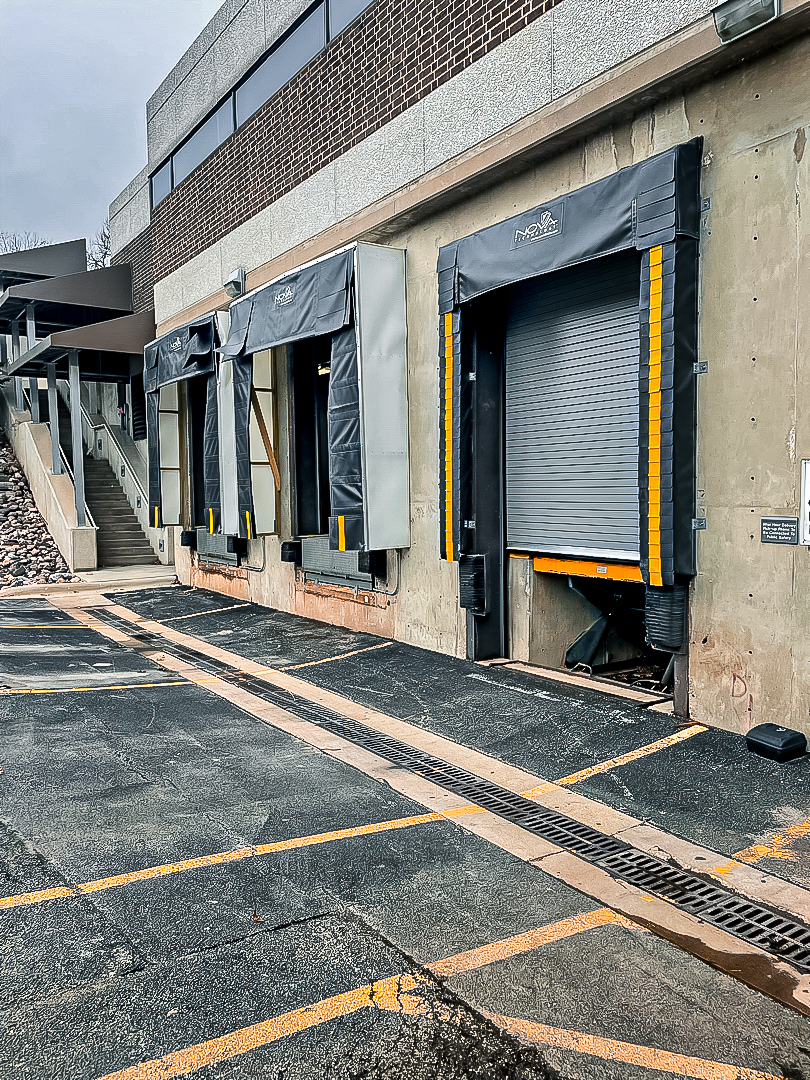
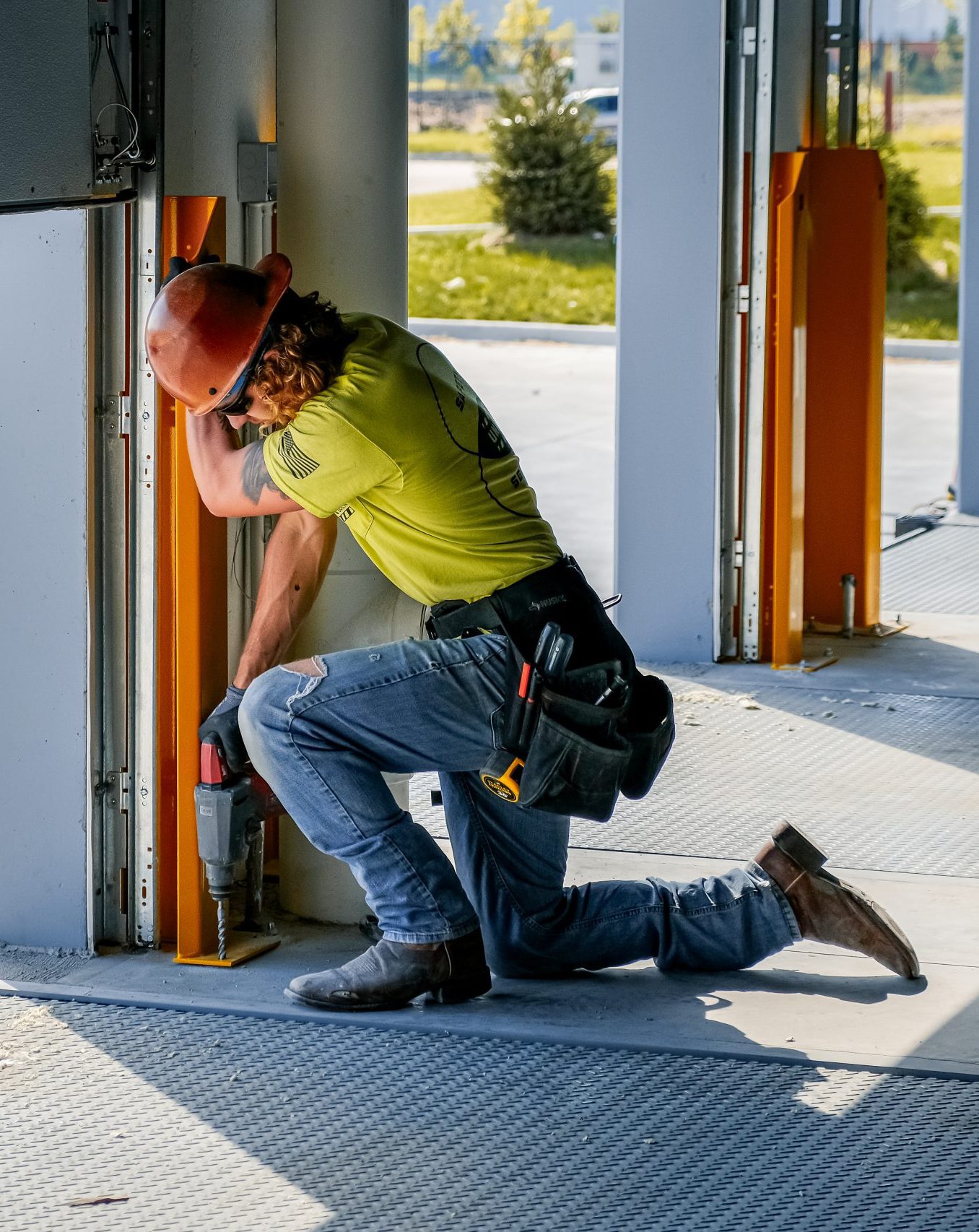
3. Keep Equipment Clean and Well-Maintained
Another critical aspect of maintaining your loading dock and doors between preventative maintenance appointments is to keep the equipment clean and well-maintained. This includes:
4. Open Communication and Reporting Issues
A critical factor in maintaining your loading dock and doors between preventative maintenance appointments is fostering a culture of open communication among your team members. Encourage your team to report any issues or concerns regarding the equipment so that you can address them promptly. Doing this will help prevent minor problems from escalating into more significant, expensive issues that can cause downtime or damage to your equipment.
5. Develop a maintenance and repair plan
While preventative maintenance appointments with a professional service provider are crucial, it’s essential to have a plan in place for handling any maintenance or repair needs that arise between appointments. This may involve having a designated team member responsible for minor repairs or establishing a relationship with a trusted local service provider who can quickly respond to your repair needs.
6. Monitor Equipment performance
You should regularly monitor your equipment’s performance to keep your loading dock and doors running smoothly between preventative maintenance appointments. Keep an eye on key performance indicators (KPIs), such as door opening and closing times, dock leveler functionality, and the efficiency of your loading and unloading processes. This can help you identify potential issues or areas for improvement, allowing you to make adjustments as needed.
7. Prioritize Safety
Safety should always be a top priority when it comes to maintaining your loading dock and doors between preventative maintenance appointments. Ensure that all team members are aware of and adhere to safety protocols, such as wearing appropriate personal protective equipment (PPE), using proper lifting techniques, and following guidelines for safely operating dock and door equipment. By prioritizing safety, you can help prevent accidents and injuries and minimize the risk of damage to your equipment.
8. Stay up to date on industry best practices
It’s important to stay informed about industry best practices and innovations. Subscribe to industry publications, attend workshops or webinars, and network with other professionals in the field to stay current on the latest trends and developments. You can continually refine and improve your dock and door maintenance strategies by staying up-to-date on best practices.
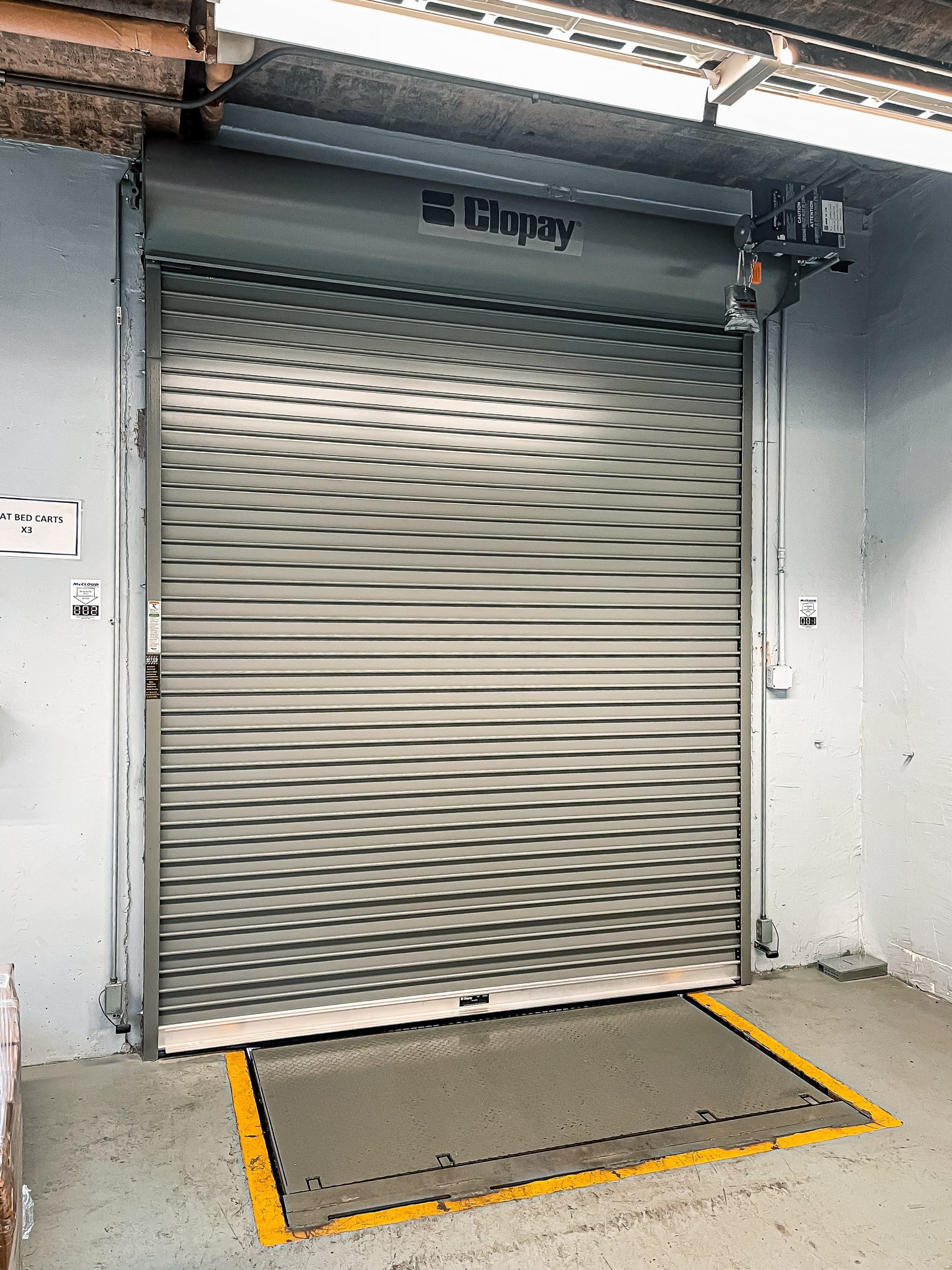
9. Plan for equipment replacement and upgrades
Even with diligent maintenance, loading dock, and door equipment will eventually need to be replaced or upgraded. To avoid unexpected downtime or costly emergency replacements, you can plan for these needs by regularly assessing the condition and performance of your equipment. Establish a budget and timeline for equipment replacement. Consider investing in energy-efficient or technologically advanced upgrades that can improve the overall efficiency and safety of your loading dock and doors.
10. Foster a Culture of Continuous improvement
Even with diligent maintenance, loading dock, and door equipment will eventually need to be replaced or upgraded. To avoid unexpected downtime or costly emergency replacements, you can plan for these needs by regularly assessing the condition and performance of your equipment. Establish a budget and timeline for equipment replacement. Consider investing in energy-efficient or technologically advanced upgrades that can improve the overall efficiency and safety of your loading dock and doors.
Closing Thoughts
We know how important keeping your loading dock and doors running smoothly between preventative maintenance appointments is for the success of your warehouse or distribution center. Regular preventive maintenance appointments with a professional service provider like United Door and Dock are essential. Still, the steps you take between these appointments can make all the difference in keeping your operation running smoothly. By following these best practices, you can minimize downtime, extend the life of your equipment, and maintain a safe and efficient work environment for your team. Do not hesitate to call us with any questions. We are here to help.
